11 Key Supplier Diversity Statistics You Need to Know


Supplier diversity has become a hot topic, particularly in recent years.
However, what is its real impact on businesses overall, and specifically on procurement?
And is it really worth all the time, money, and effort?
To answer these questions effectively, we must turn to data.
That’s precisely what we’ll be doing in this article, in which we reveal 11 very interesting statistics about supplier diversity.
We’ll unpack each one, share some real-world examples as well as expert insights, and more.
Let’s jump right in!
Is supplier diversity gaining traction?
A Supplier Diversity Landscape survey from KPMG certainly suggests so.
As it turns out, the vast majority (85%) of Fortune 500 companies already have a supplier diversity program in place.
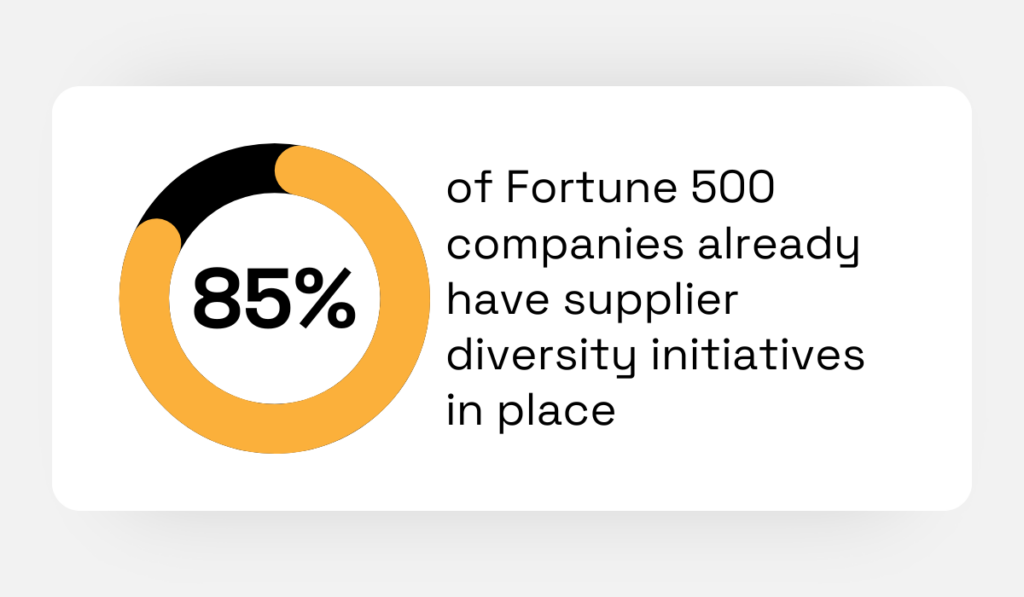
Illustration: Veridion / Data: KPMG
Why is this such a big deal?
Because it indicates a real, strong commitment among these leading businesses to include a wide range of diverse suppliers in their procurement process and create more inclusive supply chains.
This is beneficial for everyone involved—suppliers, communities, and companies alike.
For smaller and underrepresented suppliers, it means greater visibility and opportunities to thrive, which in turn fuels local community growth and prosperity.
And as for businesses, partnering with diverse vendors can unlock completely new customer bases, boost their reputation, and, ultimately, even increase their profitability.
Take Walmart, for example.
In 2023 alone, Walmart’s spending with diverse suppliers in the US exceeded an impressive $13 billion as part of its Supplier Inclusion program.
Their president and CEO, Doug McMillon, explains that such large enterprises have a unique opportunity to collaborate with many diverse vendors and suppliers.
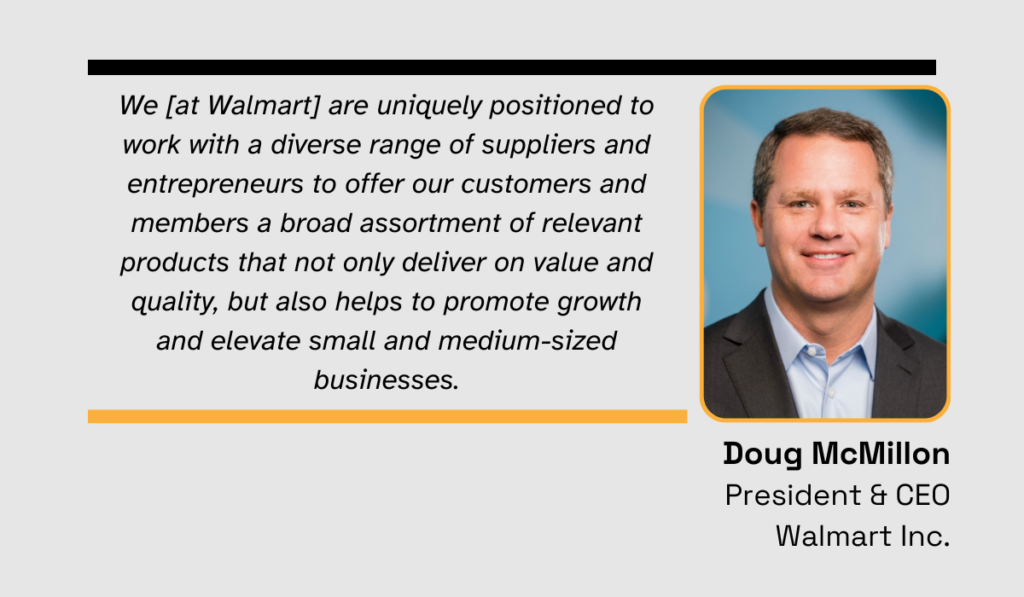
Illustration: Veridion / Quote: Walmart
And they should definitely take it.
This not only helps these companies grow but also significantly improves customer experience and satisfaction.
Overall, this statistic hints at one very important thing: there’s a growing recognition of the importance of corporate social responsibility, and large businesses seem to be taking tangible steps to contribute.
This statistic comes from Supplier.io’s 2023 Supplier Diversity Benchmarking report.
The study analyzed total spending data across 466 companies in more than 15 industries and found that their average spend on diverse suppliers is 3.6%.
However, this average masks significant variance between the analyzed sectors: some high-performing industries spend about two times more than the cross-industry average.
For instance, the energy sector dedicates 9% of its spending to diverse suppliers, while high-tech follows closely with 8%.
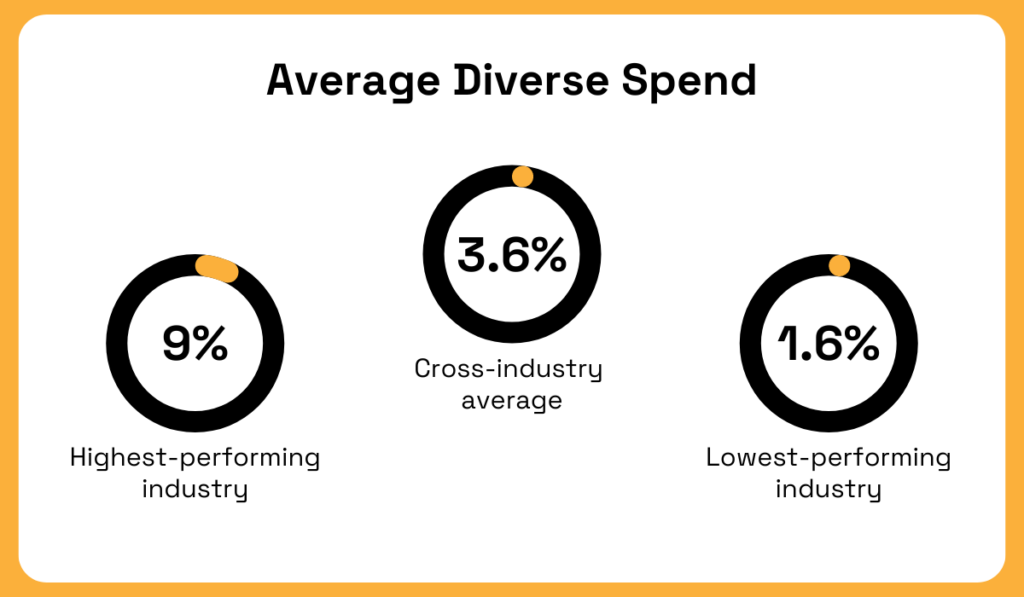
Illustration: Veridion / Data: Supplier.io
On the flip side, some industries are lagging behind.
The food and beverage sector’s diverse spend averages at a mere 1.6%, and retail isn’t much better at 2.1%.
These results highlight a critical point for anyone looking to benchmark their own diversity program’s success: industry context matters.
Obviously, this discrepancy is substantial, so to get the most accurate picture, compare your diverse spend within your specific industry.
This way, you’ll have a clearer understanding of where you stand and how you can improve.
It’s natural for business leaders to worry about the ROI and risks involved in their supplier diversity initiatives.
However, the 2017 research from The Hackett Group suggests there’s no need for concern.
The study shows that the majority of diverse suppliers—76% of them—actually met buyers’ expectations, with an additional 23% even exceeding them.
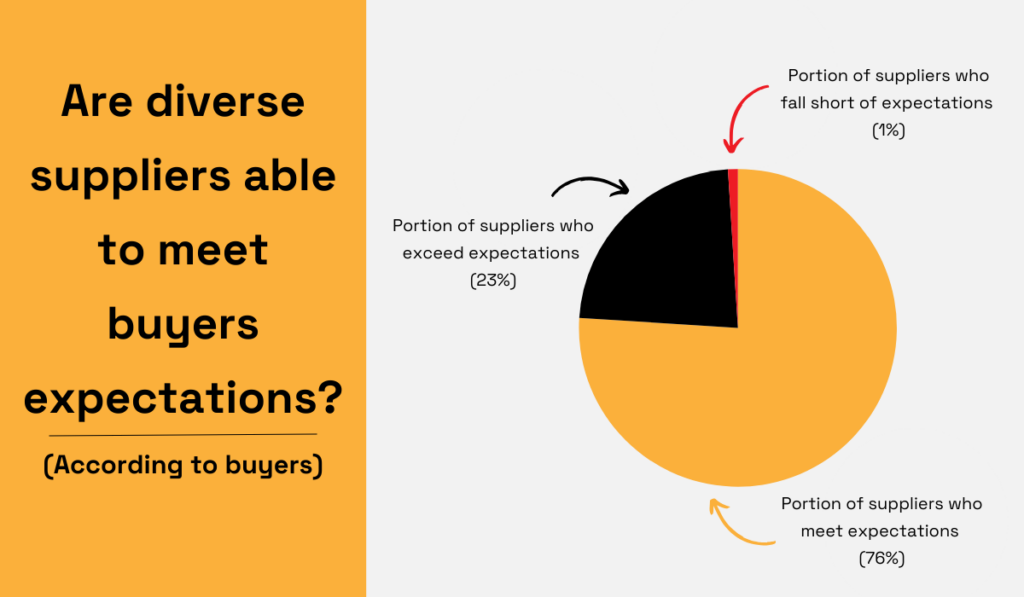
Illustration: Veridion / Data: The Hackett Group
These findings are quite reassuring, suggesting that there’s minimal risk associated with investing in a more diverse supplier portfolio.
But guess what does carry some significant risk?
That’s right: not investing in it.
Anthony Payne, Chief Marketing Officer at HICX, explains what these risks are:
“For instance, when third-party expectations to support supplier diversity are missed, this can damage brand reputation which hurts sales figures and share price. Also, the unique offerings that diverse suppliers can offer will be missed, and with it the chance to make an impact.”
So, if you are worried about the potential drawbacks of implementing supplier diversity programs, this statistic is for you.
It shows that partnering with diverse suppliers doesn’t negatively affect procurement performance in any way.
In fact, it can only improve it.
Supplier diversity programs were thriving in 2021, according to another survey from The Hackett Group.
Conducted on 100 large global and US-based companies across a variety of industries, the study reveals that almost all of these businesses invested their funds in diverse suppliers.
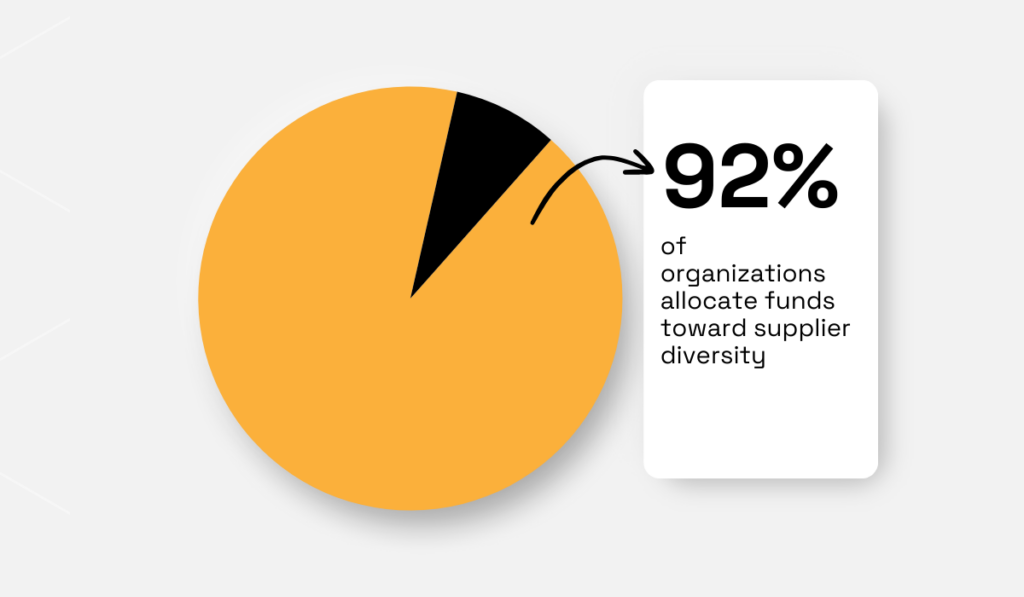
Illustration: Veridion / Data: The Hackett Group
This finding is quite interesting because it indicates that many organizations not only recognize the value and benefits of supplier diversity but also take substantial, actionable steps to improve in this field.
In other words, they aren’t just making empty promises to meet customer expectations.
Instead, they are dedicating their valuable resources and genuinely committing to driving meaningful change.
The same survey shows that Black-owned businesses are on top of the list when it comes to increasing diversity spend, outpacing LGBTQ, women, and veteran-owned businesses, among many others.
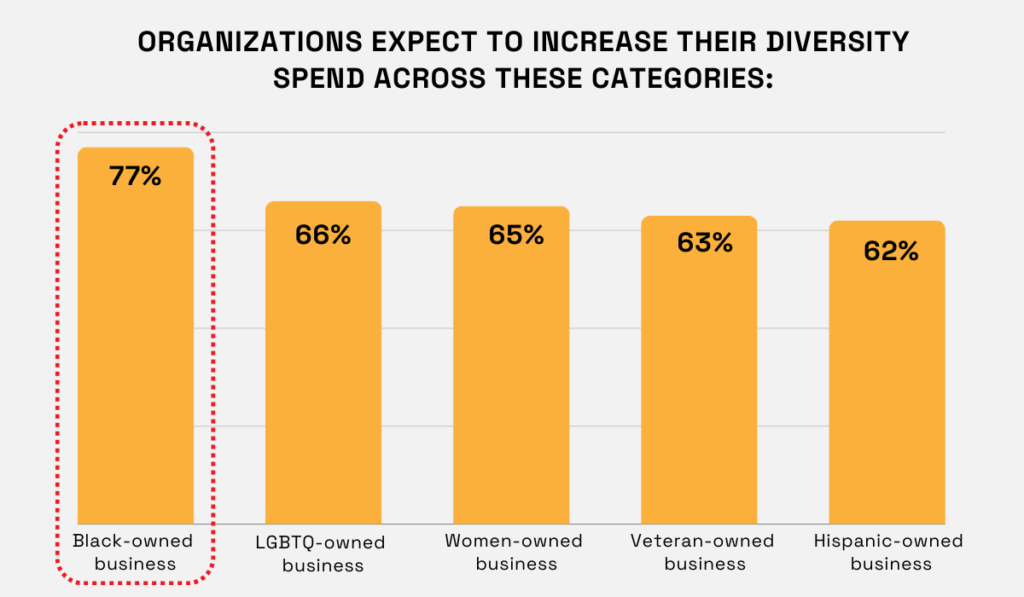
Illustration: Veridion / Data: The Hackett Group
This goes to show that companies are now starting to recognize this responsibility and support underrepresented communities through their procurement practices.
Take Target, for instance.
In 2020, they launched the Racial Equity Action and Change (REACH) Committee, specifically aimed at empowering Black-owned businesses.
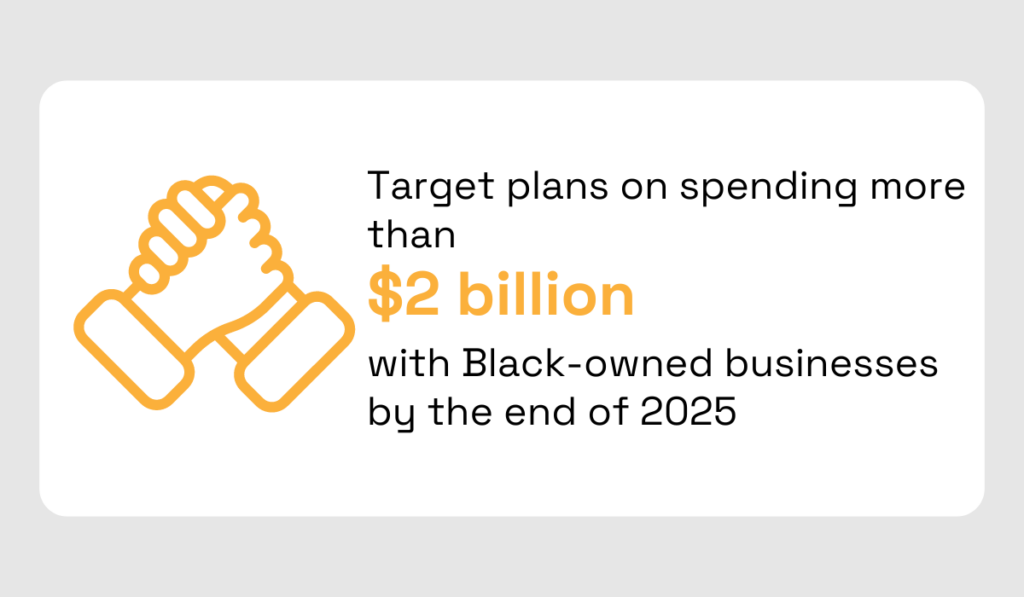
Illustration: Veridion / Data: Target
The purpose of the initiative, as per their own website, is to use their “company’s size, scale and resources to create economic opportunity for Black-owned businesses that extends outside of Target.”
And, according to The Hackett Group survey, 77% of organizations plan on doing exactly the same.
The Hackett Group survey also reveals that, in Western Europe, 30% of organizations include women-owned businesses in their supplier diversity plans, making them the most represented group in these diversity initiatives.
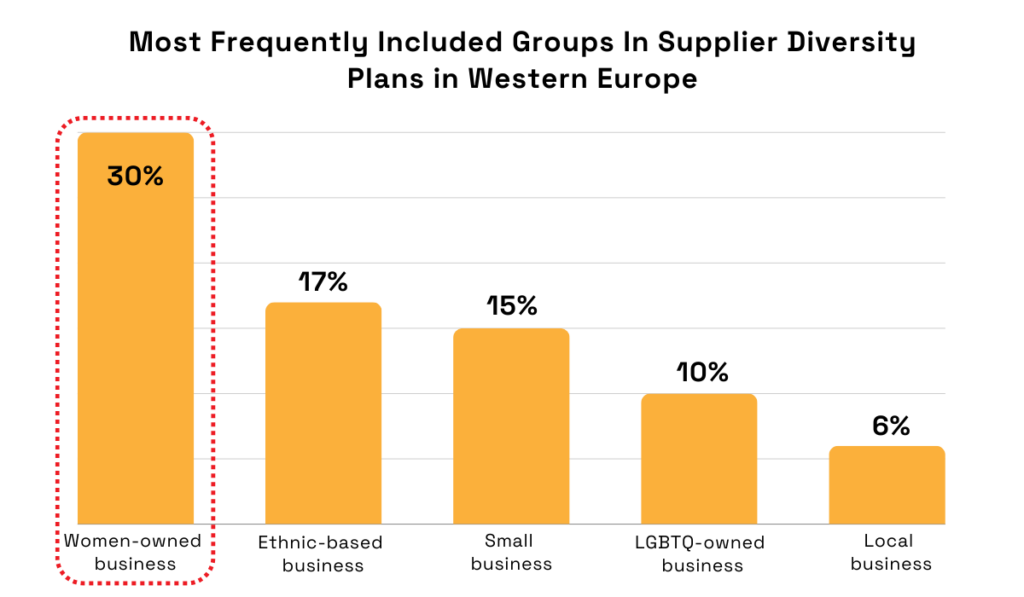
Illustration: Veridion / Data: The Hackett Group
This is excellent news for this demographic that has historically faced significant barriers, especially in the business world.
It’s clear that many Western European companies are now stepping up to rectify these problems, providing opportunities for women-owned enterprises to finally thrive in the market.
However, let’s not overlook the fact that 30% is still a relatively modest figure.
Companies should understand that supporting these businesses isn’t just a matter of social responsibility, but a strategic business decision, too.
Did you know that globally, one in three businesses are run by women?
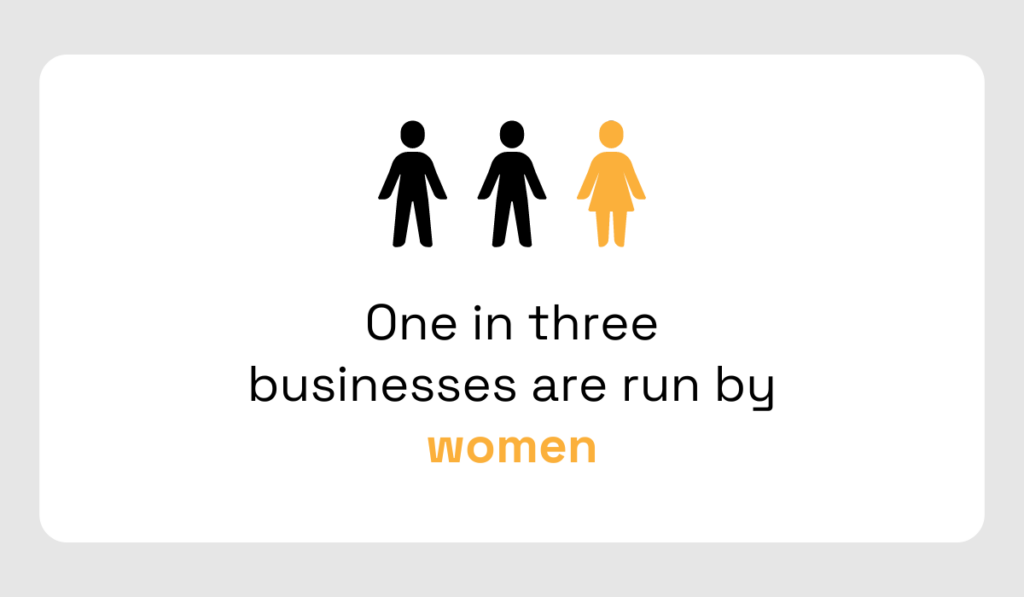
Illustration: Veridion / Data: GEM
This means that by overlooking this demographic, organizations miss out significantly.
How?
By losing the opportunity to broaden their supplier options, as well as unlock more competitive pricing and better product and service quality.
Hopefully, we will see this figure increase in the near future—and not just for women-owned businesses, but for all the other underrepresented groups as well.
In 2021, JAGGAER partnered with TealBook to conduct a survey of 90 companies worldwide across a wide range of sectors.
One of the survey’s most interesting findings was that for 27% of these businesses, lack of access to supplier diversity data was a major hurdle hindering their efforts to boost supplier diversity.
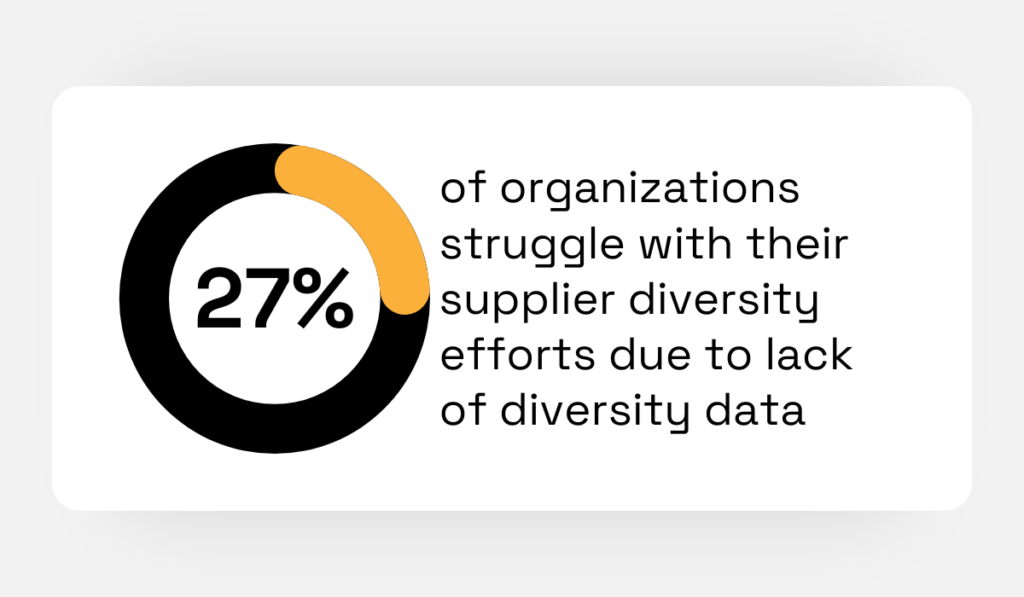
Illustration: Veridion / Data: JAGGAER
The silver lining?
This issue can be easily fixed.
AI-powered supplier sourcing enablers like Veridion allow users to tap into its vast and ever-growing database of vendors, manufacturers, or service providers, and find suppliers that fit their criteria perfectly.
And yes, that includes diversity criteria, too.

Source: Veridion
Veridion enables users to filter potential suppliers by various ESG metrics.
This includes diversified ownership, ESG policies, and ESG controversies, supporting organizations’ diversity goals already at the sourcing phase.
All in all, while a lack of data visibility can be a serious challenge, that doesn’t mean you can’t overcome it.
This is especially true today, with procurement automation thriving and providing procurement professionals with unprecedented transparency, filling crucial information gaps, and empowering them to make better-informed, data driven decisions.
Another surprising finding from the JAGGAER and TealBook survey is that nearly half of European organizations have not yet started or invested in any supplier diversity programs.
Interestingly enough, this was the predominant response when they were asked about their progress in supplier diversity efforts—by a significant margin, too.
In fact, only fewer than 10% of these businesses reported actively pursuing and planning to have a diverse supplier base by the end of the year.
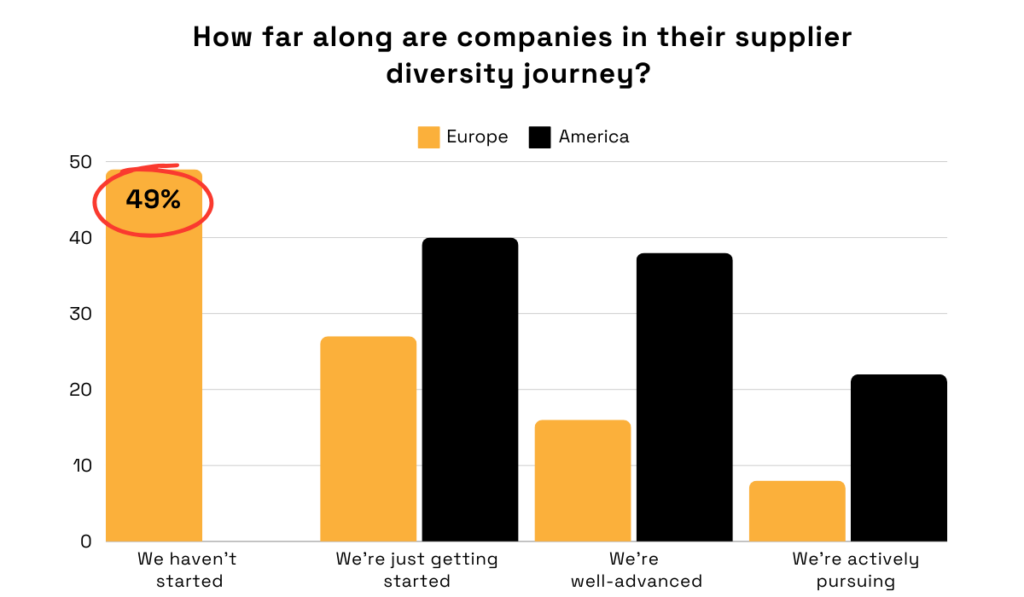
Illustration: Veridion / Data: JAGGAER
This stands in stark contrast to their North American counterparts.
Not a single North American respondent said they aren’t investing in supplier diversity programs.
Instead, many described themselves as either starting, well-advanced, or actively pursuing such initiatives.
The reasons for this contrast are not entirely clear, even to the survey authors:
“It is beyond the scope of this document to speculate on the precise reasons for the striking difference between North America (and to a lesser extent, APAC) and Europe; however, it is certain that a variety of historical, cultural, political and sociological factors are at play.”
Whether it’s due to cultural differences or simply a lack of awareness about the benefits, one thing is evident: many European companies have yet to embark on their supplier diversity journey.
When asked about how they plan to further invest in their supplier diversity, North Americans most frequently said they intend to tap into their existing supplier relationships.
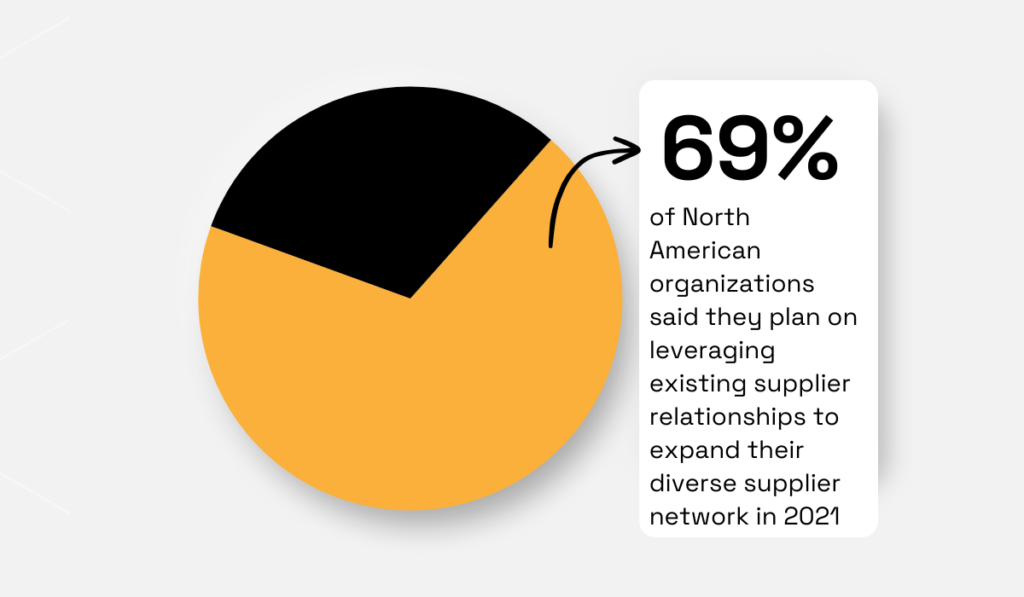
Illustration: Veridion / Data: JAGGAER
So, rather than trying to find entirely new vendors and service providers, many of these companies prefer to maintain partnerships with current suppliers they know and trust.
This strategy definitely isn’t without merit.
It allows organizations to integrate their diversity goals into existing relationships without compromising operational efficiency or needing to onboard new partners.
That way, they save quite a bit of time and money.
Of course, this isn’t to say that this approach doesn’t take some work.
These old suppliers need to be reevaluated against diversity criteria, their diversity certifications have to be verified, and sometimes, existing contracts have to be amended to recognize their status as diverse suppliers.
Nevertheless, this seems to be the strategy of choice for many North American businesses out there.
After all, why not make the most out of existing suppliers if you can, rather than wasting precious resources looking for new ones?
It’s really interesting to see that, according to the same survey, nearly half of businesses identify supplier innovation as the most significant advantage of supplier diversity programs.
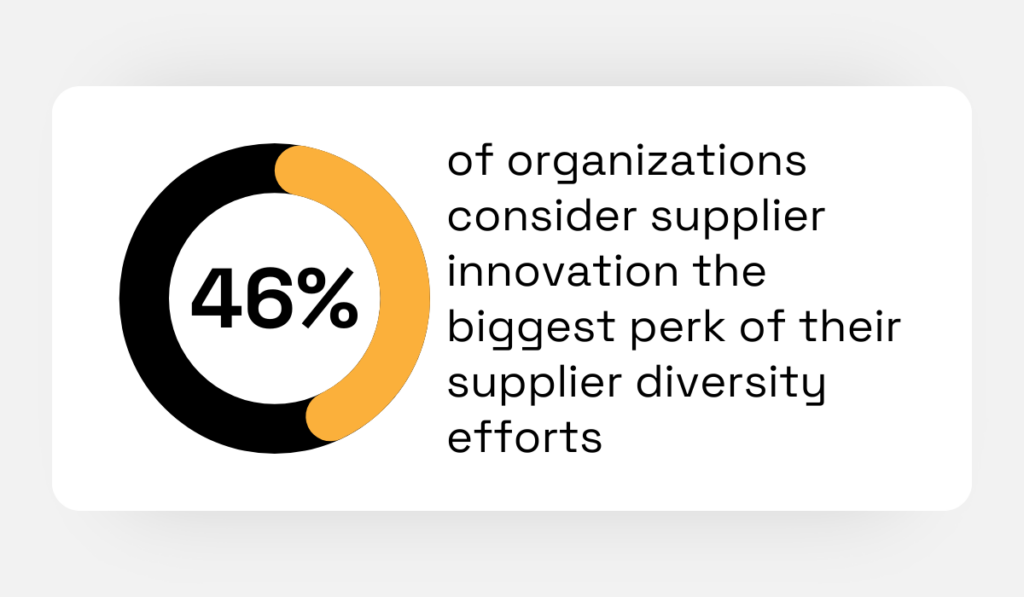
Illustration: Veridion / Data: JAGGAER
This suggests two very important things.
Firstly, having a diverse supplier network directly translates to access to fresh perspectives and creative solutions.
This can help companies increase their efficiency and profitability, as well as contribute to successful risk mitigation and a more agile procurement process.
In other words, by acknowledging this benefit, businesses are essentially confirming the substantial potential and value of supplier diversity initiatives.
Secondly, this might be a sign of shifting business priorities.
Instead of focusing only on traditional goals such as cost savings and profits, companies appear to be adopting a more strategic approach to procurement that prioritizes long-term objectives.
The days of searching for suppliers offering the lowest prices seem to be fading.
Now, it’s all about leveraging innovation to stay ahead of the competition and avoid various procurement risks.
Despite all the benefits, there are still some businesses that don’t consider supplier diversity a priority.
Granted, we’re talking only about a small minority (16%) here.
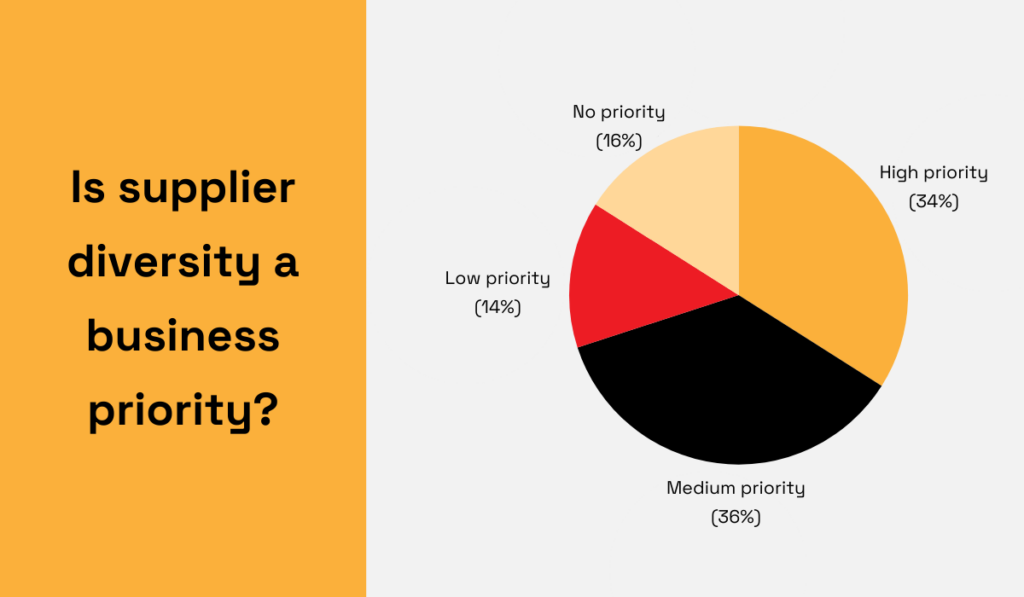
Illustration: Veridion / Data: JAGGAER
At the end of the day, it’s natural that some organizations simply can’t or don’t want to focus on diversity at the moment.
This is especially true for small businesses that often have limited resources, supplier bases, and other priorities with a more immediate impact on their bottom line.
For them, survival and growth take precedence over social responsibility.
And let’s not forget that the concept of supplier diversity itself is relatively new: many companies are just beginning to fully understand it and witness the full range of its advantages.
But who knows, maybe over time supplier diversity will become the norm, and fully fledged supplier diversity teams will be as commonplace as accounting or sales departments.
Only time will tell.
Hopefully, you found this article informative and now have a much better understanding of what supplier diversity is all about.
It’s definitely exciting to see organizations worldwide increasingly embracing this trend and investing considerable resources in building diverse supplier networks.
Of course, there’s still work to be done but, looking at these statistics, the future looks promising.
Undoubtedly, the coming years will bring even more success in this field, welcoming historically underrepresented suppliers into the market and enriching our global supply chain.